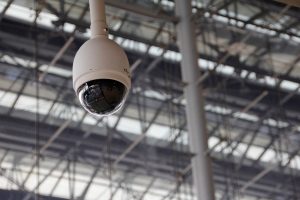One side effect of the COVID-19 pandemic in Central Asia, as well as other parts of the world, has been the rapid reorientation of existing surveillance technologies — often parts of so-called safe or smart city initiatives — toward public health-oriented uses. From facial recognition technologies to tracking techniques using smartphone apps, WiFi and Bluetooth, governments are rearranging their available tools to combat COVID-19. But such efforts are taking place amid overlapping conditions and concerns: public health and safety, yes, but also an environment lacking serious oversight even in the best of times and long-term considerations of rights to privacy and equality.
In a recent memo for PONARS Eurasia, Erica Marat outlined the “retooling existing electronic surveillance infrastructure… to monitor violations of government restrictions on movement amid the COVID-19 pandemic.” Marat, an associate professor in the Department of Regional and Analytical Studies at the National Defense University in Washington, DC, wrote in the memo that while the issue of digital surveillance “as a way of controlling the spread of COVID-19 is discussed worldwide… in Eurasia, surveillance is augmented top-down by national and municipal authorities without public oversight.”
In an interview with The Diplomat, Marat expanded further, noting that even before the pandemic there was little discussion of rights and privacy when it came to expanding use of surveillance technologies. “Some criticism began percolating in Kazakhstan and Russia among political activists before the pandemic. But overall I think the urban middle class welcomes such innovations without much concern for privacy,” she explained. “They see it as a way to control migrants or anyone not fitting in their perception of urbanity.”
In early January 2020, RFE/RL’s Bruce Pannier had identified “the invasion of facial recognition technology into the region” as one of the four most important issues in Central Asia in the previous year. While regional observers, activists and journalists have been covering the proliferation of surveillance technologies in Central Asia, the topic has not often been up for public debate nor subject to oversight.
The range of technologies being reoriented to enforce quarantine and curfews include traffic cameras, facial recognition technologies, and smartphone apps. Recent years have seen an influx of such technologies in Central Asia, under “safe” or “smart” city branding. In Central Asia, these efforts have generally fallen along two tracks, dependent on the relative wealth of a given urban area or country. “Wealthier cities like Moscow, Nur-Sultan, and Almaty are able to procure domestic supplies of technologies, although even they too purchase Chinese technologies, particularly Huawei and HikVision,” Marat told The Diplomat, adding that poorer cities like Bishkek and Dushanbe, “exclusively depend on one or more foreign providers. Usually these Chinese firms, but Russian companies such as Vega (part of Rostekh) are making in-roads in the post-Soviet space.”
The societal and governance context in which these surveillance technologies are being operationalized for new purposes is critical. The pandemic has not just given new purpose to surveillance technologies but reinvigorated the mandates of police and other security services. Umida Hashimova outlined this phenomenon with regard to Uzbekistan and in writing about human rights during the pandemic, I asked: “But when the pandemic passes, what lessons will be taken? Will policing powers enhanced during the crisis recede with the virus? Will the state’s actions be up for judgement and state abuses open to punishment? Will rights lost to the pandemic be restored?”
“The pandemic exacerbated the existing policing practices, be they newly installed cameras or human police officers enforcing public order,” Marat told The Diplomat. “In Bishkek, for instance, police officers at times arbitrarily enforced quarantine measures against cyclists, joggers, etc.”
Arbitrary and uneven policing is not new to the region and technology further amplifies existing inequalities in this regard. Marat highlights one interesting anecdote in her PONARS memo: According to at least one Russian anti-corruption activist, it turns out that buildings along Moscow’s “so-called fancy Golden Mile (Zolotaya milya), are not covered by smart cameras.”
Marat writes, “The elites are allowed to escape the city’s gaze and maintain their privacy.”
One has to wonder where Central Asia’s cameras are pointed, and who escapes their gaze.
Beyond privacy of the moment, is the technological question about the data gathered, where it is stored and who has access to it. As Ayzirek Imanaliyeva’s recent report for Eurasianet about privacy concerns surrounding the smartphone app developed by the Kyrgyz government demonstrates, this question is serious. Such concerns are in no way unique to Central Asia, but are amplified by governance systems that lack adequate mechanisms for oversight and public criticism.
































